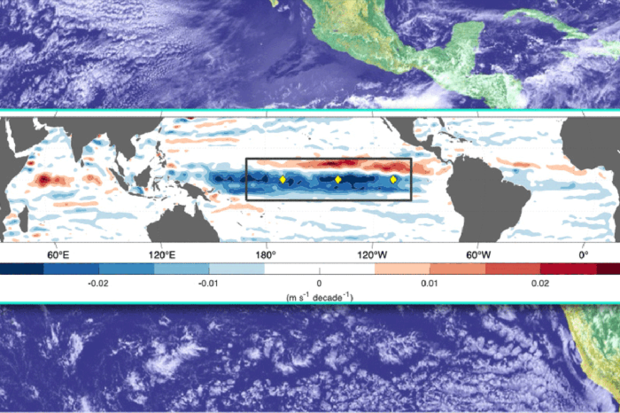Study reveals acceleration in Pacific upper-ocean circulation over past 30 years, impacting global weather patterns

West-east near-surface current trend between 1993-2022. Credit: doi:10.1029/2024JC021343

West-east near-surface current trend between 1993-2022. Credit: doi:10.1029/2024JC021343
A study published October 31, 2024, in the Journal of Geophysical Research: Oceans has revealed significant acceleration in the upper-ocean circulation of the equatorial Pacific over the past 30 years. This acceleration is primarily driven by intensified atmospheric winds, leading to increased oceanic currents that are both stronger and shallower, with potential impacts on regional and global climate patterns, including the frequency and intensity of El Niño and La Niña events. The study provides a spatial view of these long-term trends from observations, adding at least another decade of data from previous studies.
The research team, led by Franz Philip Tuchen, a postdoctoral scientist at the University of Miami Rosenstiel School’s NOAA Cooperative Institute for Marine and Atmospheric Studies (CIMAS), in collaboration with NOAA’s Atlantic Oceanographic and Meteorological Laboratory (AOML), synthesized thirty years of long-term ocean and atmosphere observations from satellites, mooring buoys, and ocean surface drifters. By integrating the reanalysis of wind data and satellite altimetry into a high-resolution, gridded time series of near-surface ocean currents, this study presents a new and comprehensive view to date of the changes in the Pacific upper-ocean circulation.